In 1889, the journalist and Egyptologist Charles Edwin Wilbour, who for about ten years had spent every winter in Egypt aboard a dahabiya (typical Nile passenger ship, with two sails) which he had converted into his home and library, he visited Aswan and its surroundings.
Precisely in Aswan he bought in the market some papyri that had been unearthed on a nearby island. Wilbour never knew the importance of these papyri, which were kept in a Paris repository for almost 50 years after his death. After being donated by his family, along with the rest of his documents and letters, to the Brooklyn Museum, it was discovered that they were the famous Elephantine Papyri .
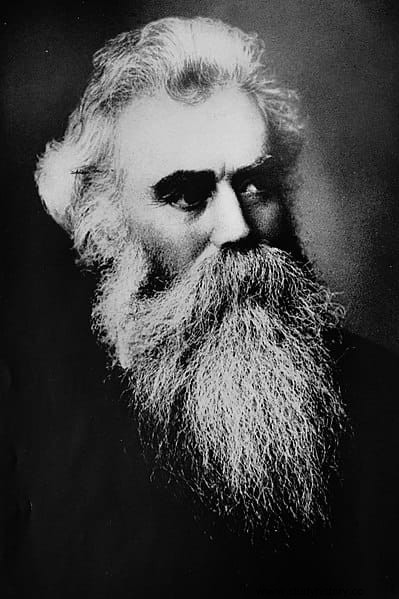
But in that same expedition Wilbour also approached another island, that of Sehel, located in the Nile about 3 kilometers southwest of Aswan, before the first cataract of the river. In it there are numerous archaeological sites and a temple, that of Anuket, the Egyptian goddess of water and the Nile Falls. But the place was mainly a granite quarry used since ancient times and at different times.
For this reason there are numerous inscriptions on the stones and boulders, left mainly by workers, but also by travelers who began or ended their journey to Nubia there. Some narrate historical events. And precisely Wilbour was going to discover one of the most curious of all.
The inscription is found on a rocky outcrop at the southern end of the island, inscribed on a large block of natural granite whose surface was prepared by cutting it into a rectangular shape. A large fissure, which already existed at the time the inscription was created, divides the rock into two parts. Some areas are damaged, making some parts of the text unreadable.
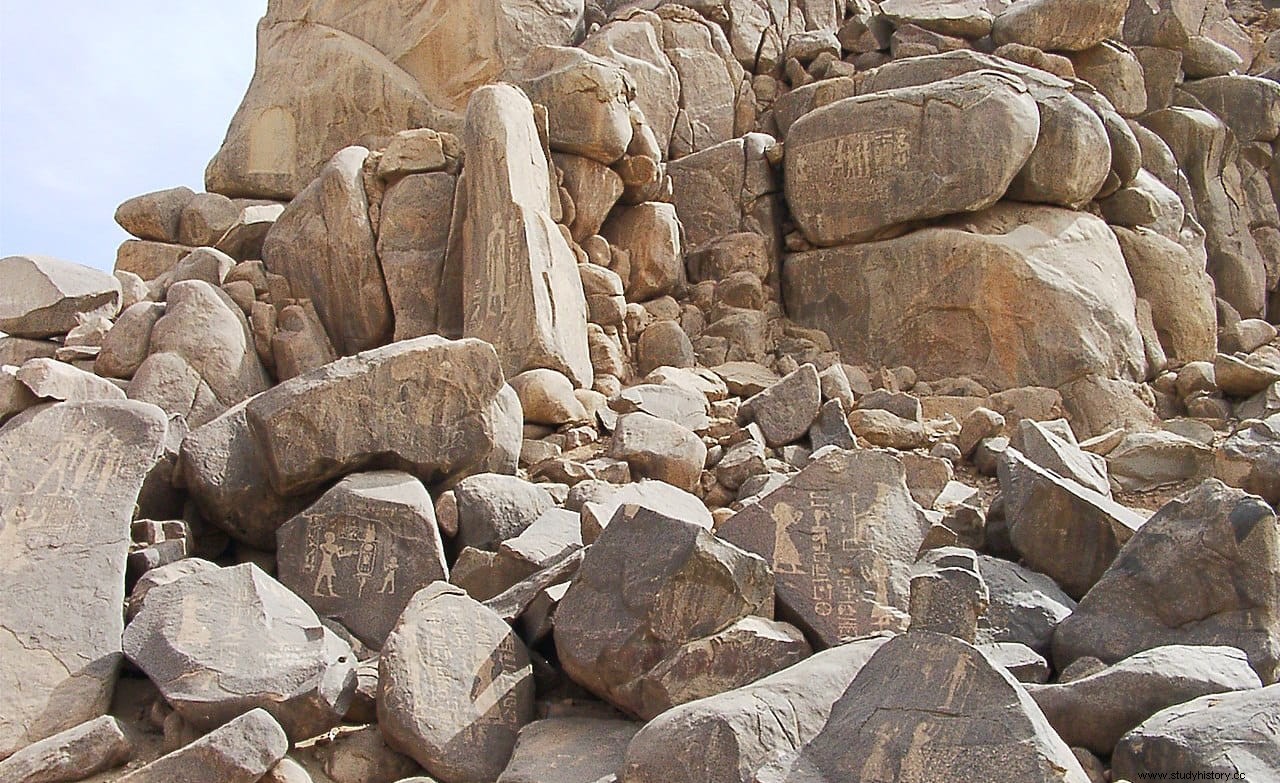
It is written in hieroglyphs arranged in 32 columns. In the upper part three deities are represented; Khnum (the creator, represented with the head of a ram), Satet (a goddess, personification of the floods of the Nile) and Anuket (goddess of water and waterfalls). In front of them, Pharaoh Zoser brings them offerings.
The inscription was translated by several scholars, the first being Heinrich Kark Brugsch in 1891. However, today the version on which there is more consensus is that of Paul Barguet, scientific director of the Franco-Egyptian Center for the Study of the Karnak Temples , who examined and translated it in 1953. Today it is called Hunger Stela .
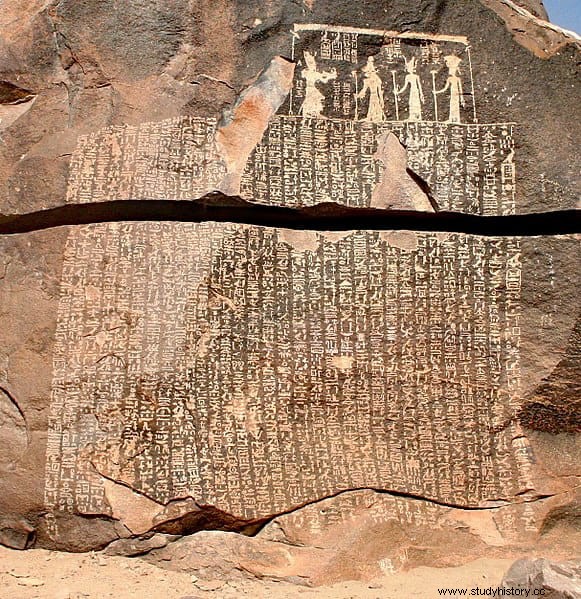
The text recounts the seven-year period of drought and famine that took place during the reign of this pharaoh of the third dynasty, the builder of the stepped pyramid who reigned around 2665-2645 BC. The drought began in the 18th year of his reign, caused by the fact that the Nile did not flood the farmland and therefore there were no crops.
The pharaoh then instructs his vizier Imhotep to investigate where the god of the Nile is born, who was annually in charge of causing the flood. This, after consulting the archives in the temple of Toth in Hermopolis, informs him that the flooding of the Nile is the work of the god Jnum, who resides in a sacred spring on the island of Elephantine. Imhotep travels to the temple of Khnum in Elephantine and while praying to the god he has a dream. In it Khnum introduces himself to him and describes his divine powers. He then promises the vizier to make the Nile flow again. Imhotep wakes up and writes down everything Khnum told him to tell Djoser.
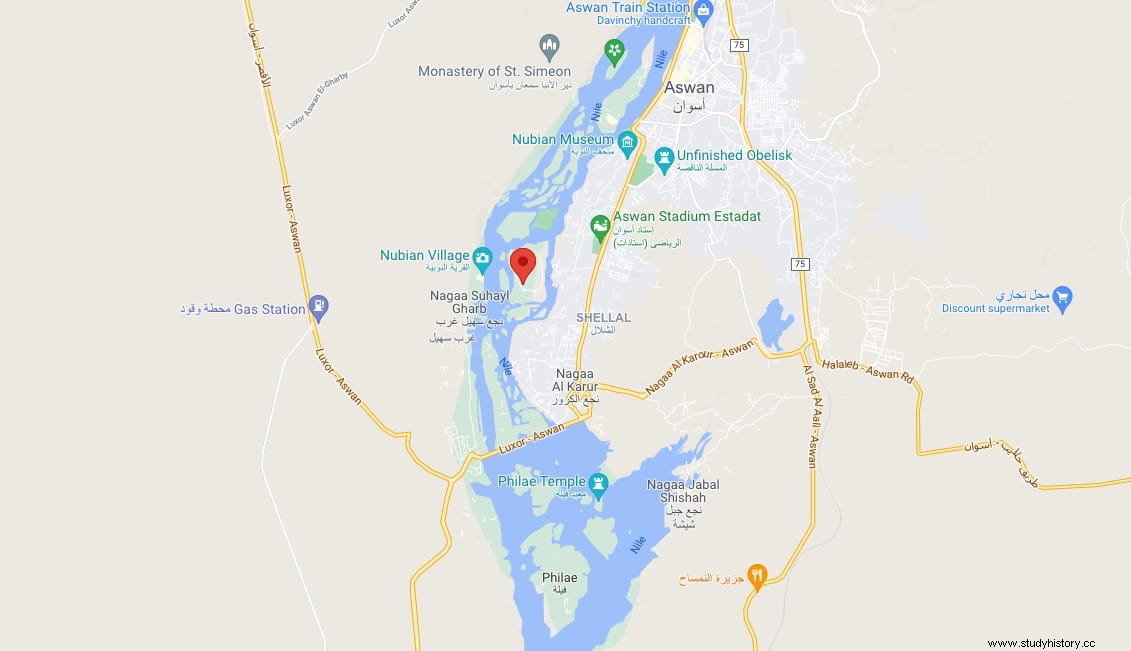
Before the story of the vizier, the pharaoh orders that the temple of Khnum be restored and that regular offerings be made to him again. Furthermore, by a decree he grants her the territory between Aswan and Tacompso, and a share of all imports from Nubia.
However, the Famine Wake it does not date from the reign of Djoser, nor even that of any of his immediate successors. Researchers believe that it was made during the time of the kingdom of the Ptolemies, the Greek rulers of Egypt after Alexander the Great, between 332 and 31 BC. That is, more than 2,300 years after the events it narrates.
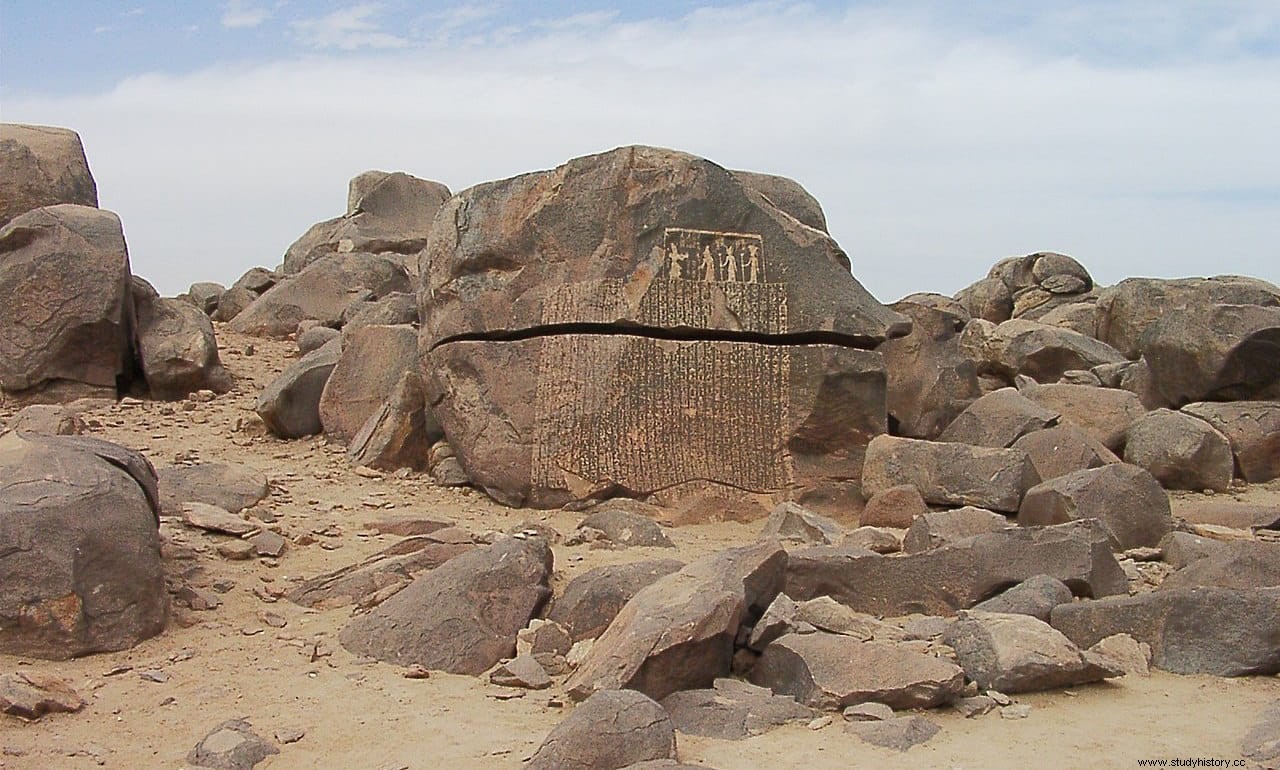
Specifically, it would belong to the reign of Ptolemy V (205-180 BC), and its creators would be the priests of the temple of Khnum, who thus sought to justify their domination over Elephantine Island and the surrounding regions. To do this, they used a common motif in almost all the cultures of the Near East, which also appears in stories such as that of Gilgamesh or that of Joseph (son of Jacob) in the Bible:the seven-year drought and the consequent famine.
For this reason, for a time, the inscription was considered to be a forgery by the priests. Today some Egyptologists believe that the facts he relates are true, others believe that they are fiction. In any case, the stele is important because it mentions the pharaoh by his Horus name, Netjerikhet , which allows researchers to relate those monuments that only have this name inscribed with Zoser.
